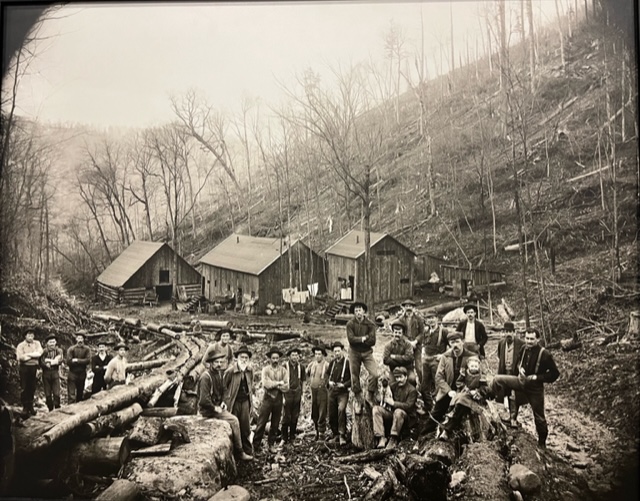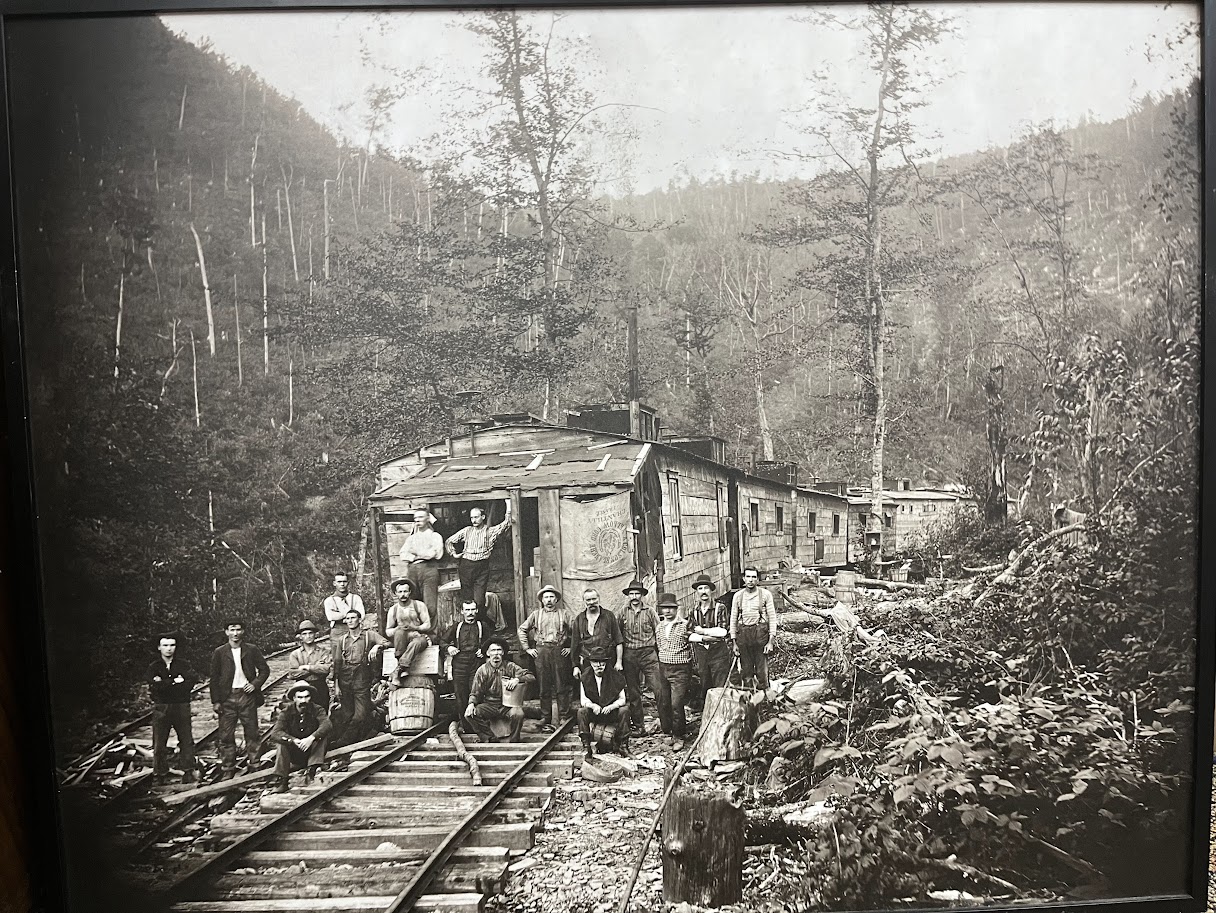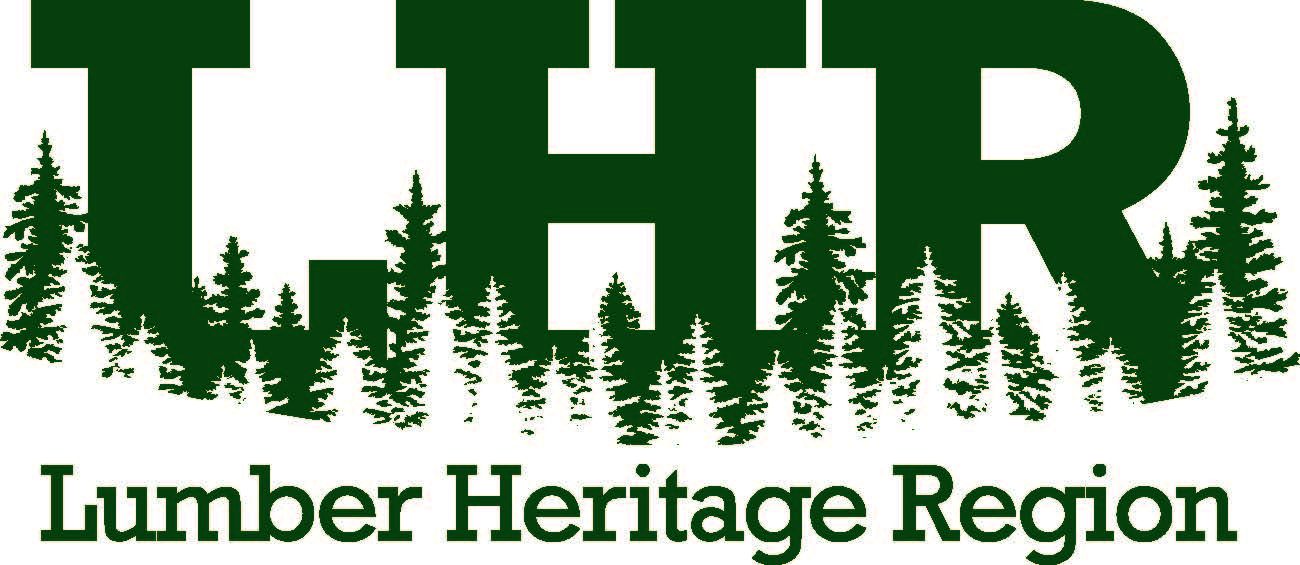Hierarchy in the lumber camps of history
By Jennifer Weld, Lumber Heritage Region
Editor’s note: This piece originally ran in the September 2024 newsletter from the Lumber Heritage Region. Learn more about the Lumber Heritage Region at LumberHeritage.org.
Photos are courtesy of William T Clarke’s Collection. These photos can be found in Lumber Heritage Region’s Wood on Glass Display. The photos are also featured in the Wood Hicks and Bark Peelers book, which is available for sale on the LHR website and contains much more information about lumber camps.
During their hey-day, whether company-owned or “jobber” operated, lumber camps were generally run in much the same way. They were bastions of the pre-industrial workplace, as they defied modern management practices and instead built a culture around masculinity.
Camps could include 50-100 diverse and often unacquainted men living and working in close quarters. Preventing fights and keeping the men on-task was the job of the Camp Boss.

Each camp had a Boss. He was a man of many skills, not the least of which was his ability to keep order; sometimes this meant using his fists and sheer strength if necessary. The position of Camp Boss was not easy, and not for someone who was meek or mild-mannered. All aspects of camp life, from cooking to cutting, were supervised by the Camp Boss; he was often both the brains and the brawn of the operation.
The mess hall (kitchen and dining facilities) was considered by the men to be the most important of all camp amenities. In larger camps, the kitchen crew consisted of 2 cooks and several more ‘cookees’- young men who were cooks in training, that served the food, peeled potatoes, and carried out other odd jobs. Wood hicks could consume 8,000 – 9,000 calories daily and they burned every calorie they could get. The work was exhausting, lasting 12 to 14 hours a day and often under brutal weather conditions during the winter months.
The quality and quantity of food served in a camp often determined whether it would succeed or go bankrupt; camps with poor food had a hard time keeping their lumberjacks for long. Morale and productivity could not be maintained with poor food or lazy cooks. Bad cooks were often called “Belly Robbers” by the men as they stole their desire to eat. Mealtime was not social hour and talking was often not allowed, other than to ask for food to be passed. This policy helped to avoid arguments and fights between rough men who already spent too much time together outside of meals.
The sleeping quarters and lobby were run by the lobby hog, a minion of the Camp Boss. The lobby hog was the camp equivalent to housekeeping at a hotel. He did everything from making beds, sweeping floors, hauling wood in for the stove, and anything else that would keep the sleeping quarters and lobby orderly and well maintained. Often, the lobby hog was quite the character – an older man who was a teller of tall tales, singer, dancer, jokester and actor. He provided some entertainment for the men, as they would gather in the lobby after a hard day’s work and a hearty meal.

Due to their remote location, lumber camps had to be highly self-sufficient. Wood hicks brought any clothing they would need with them when they arrived in camp. Regular shipments of dried and canned foods would arrive by the rail line that also sent the timber the camp harvested to market.
The bunkhouse and mess hall were the center of social life in the camp, and provided a place to eat, relax and sleep. In addition, most lumber camps also had a blacksmith, stable, store, office – all of whom reported to the Camp Boss. If this collection of structures was like its own little town, then the Camp Boss was definitely the mayor.
About the Author:
The Lumber Heritage Region (LHR) is a 15-county region in North West/North Central Pennsylvania that accentuates the importance of the lumber industry for the past, present, and future. The goal of the heritage region is to market its assets to potential visitors, to serve as a resource to the PA hardwood industry, and to keep the economic impact of the region at the forefront. LHR is a 501C3 organization that is dedicated to helping the region make an impact internationally. It is their mission to serve the region with technical, educational, and financial assistance through the coordination of networking and communication initiatives.



